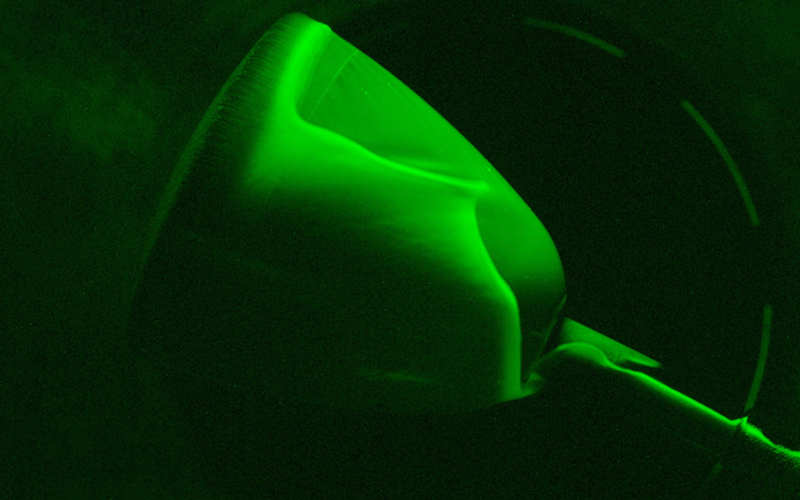
The Exploration Company has completed a wind tunnel test campaign for its Nyx Earth spacecraft. The company will initially utilize the spacecraft to offer cargo missions to and from space stations in low Earth orbit at a cost of $150 million per flight.
The wind tunnel testing campaign for the Nyx Earth capsule design was conducted with a scale model at the German space agency DLR’s facilities in Cologne. Over a series of sixteen wind tunnel tests, the company explored the vehicle’s performance in the hypersonic regime.
“Test data show a statically stable shape in the hypersonic regime, a good correlation with our numerical simulations, and confirms our capsule’s ability to re-enter through the atmosphere,” The Exploration Company explained in a post on LinkedIn.
In addition to completing wind tunnel testing of the design, the company, in conjunction with the European Space Agency (ESA), is in the middle of the Preliminary Design Review (PDR) for the Nyx spacecraft. The PDR process is used to ensure a design meets all mission requirements before proceeding to detailed design and development. The review focuses on verifying that the preliminary design is complete, identifying potential issues, and confirming that the project can proceed within its schedule and budget constraints.
ESA has selected The Exploration Company as one of two companies to perform a demonstration flight to and from the International Space Station as part of the agency’s LEO Cargo Return Service initiative. The company received €25 million in funding from the agency to complete phase 1 development. Funding for phase 2 of the project is expected to be confirmed following the next ESA ministerial level council meeting in late 2025.
The unfortunate end to the Bikini demonstrator’s mission
The Exploration Company’s first subscale demonstrator, the Bikini demonstrator, was launched aboard the inaugural Ariane 6 flight earlier this week. The company built the demonstrator in nine months for less than €2 million. According to the company’s CEO, Hélène Huby, the name was “chosen jokingly because the capsule might be almost ‘naked’ when it splashes down.”
While the inaugural Ariane 6 launch was largely successful, an anomaly with the rocket’s upper stage occurred just prior to its deorbit burn. As a result, the deployment of the Bikini demonstrator was abandoned, and the capsule remains attached to the stage, orbiting around over 500 kilometers above the Earth.
While unfortunate, the company has stated that not being able to complete the atmospheric reentry phase of the Bikini demonstrator mission will not affect Mission Possible, the company’s next subscale demonstrator, or the development of the full-size Nyx spacecraft.
“Would we fail, we do not need Bikini flight data to move forward,” explained the company in a statement published prior to the mission’s launch. “We [are using] different thermal protection for our next vehicles, and we have performed on-ground plasma tests to calibrate our aero-thermal models.”
Additionally, while the reentry phase did not occur, the company stated that it achieved nine out of the ten objectives it had set for the mission.
The Mission Possible demonstrator, the company’s second subscale demonstrator, is slated to be launched aboard a SpaceX Falcon 9 in the first half of 2025. The capsule has a diameter of 2.5 metres, while the Bikini demonstrator has a diameter of just sixty centimetres, and the full-size Nyx spacecraft will have a diameter of 4 metres.
Update: A previous version of this article incorrectly stated that the wind tunnel testing campaign had been conducted on the Mission Possible demonstrator.




